The US detonates "Mike," the first hydrogen bomb, on Nov. 1, 1952.
It's been a very Russian election in the US. Between talk about Russian hackers and GOP nominee Donald Trump's supposed bromance with Russian President Vladimir Putin it's easy to forget that we're dealing with two superpowers that together control more than 90 percent of the world's nuclear arms.
Whoever wins the US presidency on Nov. 8 will be tasked with managing America's increasingly tense relationship with Russia. And that means managing the future of a decades-long and complicated nuclear relationship with Russia — and with the world.
Ever since the US dropped atomic bombs on Hiroshima and Nagasaki to end World War II, many nations and intergovernmental organizations have worked to limit the threat nuclear weapons pose to the world. Over that same time, a few nations invested heavily in obtaining and developing those weapons for themselves. And all the while, the US and the Soviet Union (and then Russia after the fall of the USSR) have been at the center of it — two massively armed nuclear superpowers that have often been in competition over their arsenals and yet have at times become partners in pursuit of disarmament and non-proliferation.
It's a complex history, and one that's nowhere near finished. Here's a timeline of key moments in that history so far.
The Manhattan Project — 1942
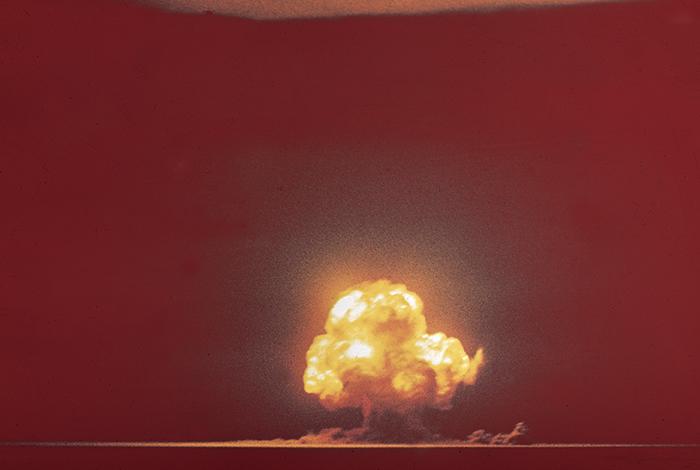
The Manhattan Project was a nuclear research and development operation involving the US federal government, the US military and civilians scientists. Its goal: Develop a nuclear weapon before Germany could. President Franklin Roosevelt approved the project in 1942 and it ran until 1946, at a cost of $2.2 billion. The newly created Los Alamos Scientific Laboratory, headed by physicist J. Robert Oppenheimer, served as home base for the project.
Researchers there collaborated with several labs around the country to design the first atomic bombs, including ones that would later be dropped on the Japanese cities of Hiroshima and Nagasaki. On July 16, 1945, Los Alamos scientists officially ushered in the nuclear age when they successfully detonated a plutonium implosion-type device at a US Air Force base in the New Mexican desert. Oppenheimer called the site of the nuclear test "Trinity."
US drops atomic bombs on Hiroshima and Nagasaki — August 1945
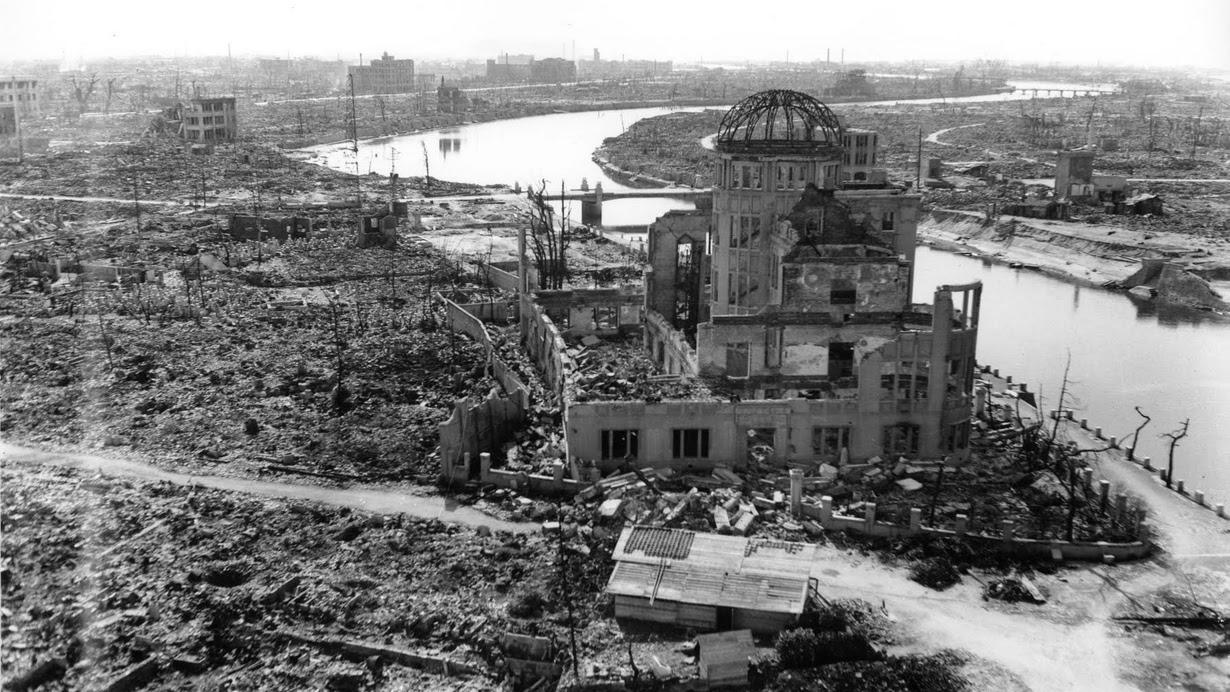
President Harry Truman's decision to drop atomic bombs on Hiroshima and Nagasaki remains one of the most controversial military choices of the 20th century. The first bomb, "Little Boy," fell on Hiroshima on Aug. 6, 1945, and the second, "Fat Man," hit Nagasaki three days later. The death toll, including those who died from the radiation, is estimated to have been about 135,000. Japan announced its surrender on Aug. 15.
UN calls for elimination of nuclear weapons — Jan. 24, 1946
The danger of nuclear weapons was immediately apparent, even to nations that had just spent years bombing each other into oblivion using conventional arms. The United Nations, a newly established international body designed to prevent a war on the scale of World War II from happening again, quickly moved to control nuclear power. In its first session on Jan. 24, 1946, the UN General Assembly established the Atomic Energy Commission, and asked that the commission submit proposals "for control of atomic energy to the extent necessary to ensure its use only for peaceful purposes" and "for the elimination from national armaments of atomic weapons and of all other major weapons adaptable to mass destruction."
The commission was replaced in 1952 by the UN Disarmament Commission.
Soviet Union and UK go nuclear; US goes thermonuclear — 1949 to 1952
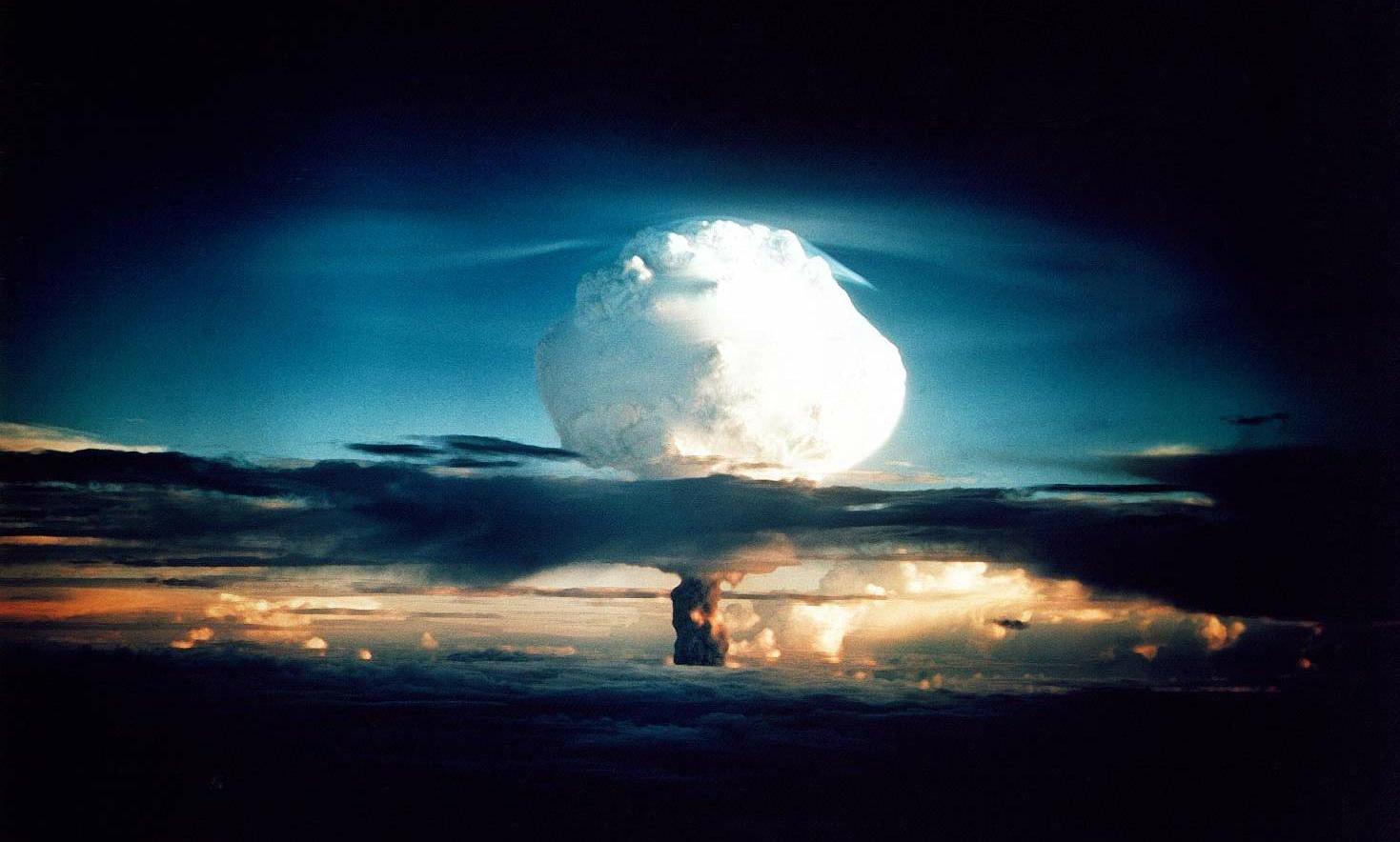
The Soviet Union detonated its first atomic device on Aug. 29, 1949. It was code-named "RDS-1." The bomb was based on details from the "Fat Man" bomb that Soviet spies had stolen from within the Manhattan Project. In response to the Soviets' ascension as a nuclear power, the US looked to upgrade its own arsenal.
On Nov. 1, 1952, about a month after the UK became the third country to test a nuclear bomb, the US detonated the first thermonuclear device, or hydrogen bomb, as part of "Operation Ivy." The device, "Mike," exploded on Eniwetok atoll in the Marshall Island with a yield of 10.4 megatons — nearly 1,000 times more powerful than the atom bomb that fell on Hiroshima. The nuclear arms race between the US and the Soviet Union was on.
International Atomic Energy Agency founded — July 29, 1957
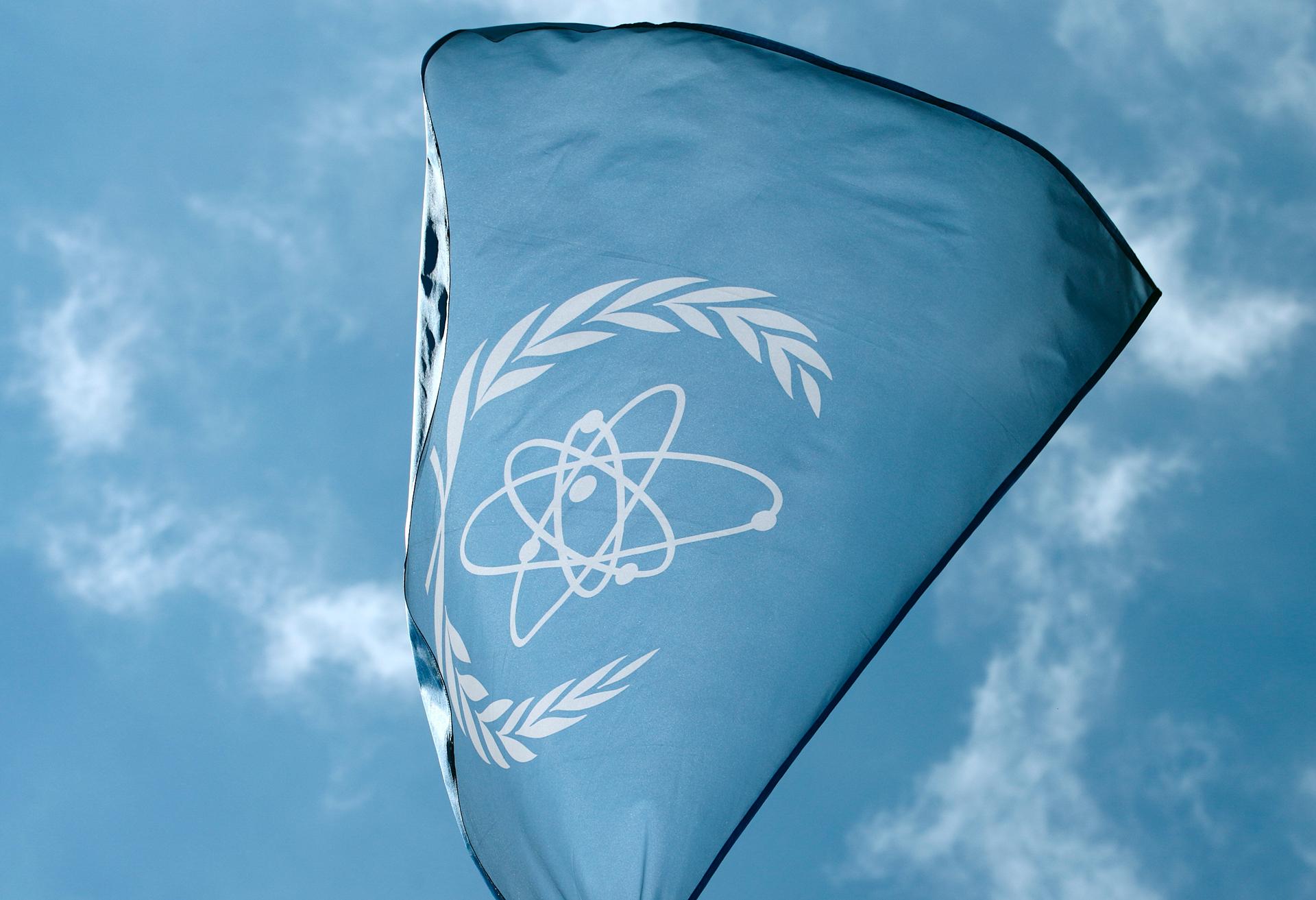
The International Atomic Energy Agency (IAEA) was founded on July 29, 1957 as an independent organization that reports to the UN General Assembly and Security Council. Its formation was inspired by US President Dwight Eisenhower's 1953 address to the General Assembly, "Atoms for Peace," in which he called for the creation of an international body dedicated to harnessing nuclear power for peaceful uses and to preventing the proliferation of nuclear weapons. As of February 2016, the IAEA had 168 member states.
Antarctic Treaty — Dec. 1, 1959
The Antarctic Treaty made the continent a nuclear-free zone at a time when multiple countries were actively exploring and staking territorial claims there. The original signatories of the treaty were Argentina, Australia, Belgium, Chile, France, Japan, New Zealand, Norway, South Africa, the Soviet Union, the UK and the US. It was an important, precedent-setting commitment to peaceful scientific collaboration and demilitarization at a time when both the Soviet Union and the US were expanding their nuclear arsenals.
France goes nuclear — Feb. 13, 1960
France's first nuclear test took place in the Sahara Desert of Algeria. It was code-named "Gerboise Bleue," which means "blue desert rat." The bomb's yield was 70 kilotons.
Cuban Missile Crisis — October 1962
oembed://https%3A//www.youtube.com/watch%3Fv%3DEgdUgzAWcrw
For 13 tense days in October 1962, the world came as close as it had ever been to nuclear war between the US and the Soviet Union. The Cuban Missile Crisis began on Oct. 16, when President John F. Kennedy's national security team showed him aerial photographs of what the CIA had concluded was a Soviet missile base under construction in Cuba — a response in part to the US failed Bay of Pigs Invasion in April 1961.
After days of deliberation, Kennedy gave a televised address about the situation, announced a naval blockade and called on the Soviet Union to disarm. After days of high-stakes negotiations, the Soviets agreed to remove their offensive missiles from Cuba. In exchange, the US promised it would not invade Cuba and, secretly, promised to remove intermediate range missiles from Turkey.
Partial Test Ban Treaty — Aug. 5, 1963

As the environmental and health dangers of nuclear fallout became clearer, public demonstrations against nuclear testing grew. In response, the Soviet Union, the UK and US signed the Partial Test Ban Treaty on Aug. 5, 1963, banning nuclear tests in the atmosphere, outer space and underwater. It was a compromise agreement after years of negotiations toward a comprehensive test ban. And while it didn't directly engage issues of proliferation, it established important precedent as the first Cold War nuclear arms agreement.
China goes nuclear — Oct. 16, 1964
The People's Republic of China detonated its first nuclear device on Oct. 16, 1964 in the Gobi desert. It was code-named "Operation 59-6" and produced a 22-kiloton yield.
Treaty for the Prohibition of Nuclear Weapons in Latin America and the Caribbean — Feb. 14, 1967
Also known as the Treaty of Tlatelolco, it was signed in Mexico City and prohibited parties to the treaty from testing, using, manufacturing, acquiring or storing nuclear weapons. Member states include: Antigua and Barbuda, Argentina, Bahamas, Barbados, Belize, Bolivia, Brazil, Chile, Colombia, Costa Rica, Cuba, Dominica, Dominican Republic, Ecuador, El Salvador, Grenada, Guatemala, Guyana, Haiti, Honduras, Jamaica, Mexico, Nicaragua, Panama, Paraguay, Peru, St. Kitts and Nevis, St. Lucia, St. Vincent and the Grenadines, Suriname, Trinidad and Tobago, Uruguay and Venezuela.
Nuclear Non-Proliferation Treaty — July 1, 1968
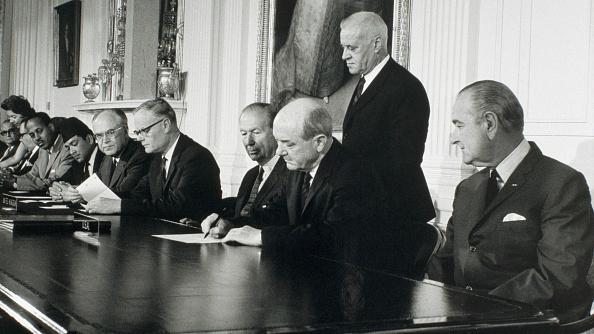
The Treaty on the Non-Proliferation of Nuclear Weapons (NPT) is the cornerstone of the global effort to limit the proliferation of nuclear arms. It has three key tenets. First, nations that do not have nuclear weapons will not seek to obtain them. Second, nations with nuclear weapons will commit to the goal of disarmament. Third, all nations have the right to use nuclear technology for peaceful purposes. The NPT was renewed indefinitely in 1995 and 191 states are now party to it.
SALT I and Anti-Ballistic Missile Treaty — May 26, 1972
The Strategic Arms Limitation Talks brought together the US and Soviet Union as both were growing concerned about one another's ballistic missile arsenals and defense systems. SALT I began in Helsinki, Finland, in November 1969 and resulted in the signing on May 26, 1972, of the Anti-Ballistic Missile Treaty and an interim agreement that set limits on the production of intercontinental ballistic missiles (ICBMs) and submarine-launched ballistic missiles (SLBMs).
The ABM Treaty was rooted in concerns that robust missile defense systems would eliminate the deterrent effect of each nation's nuclear arsenal. Without the threat of mutually assured destruction, one nuclear power could launch a preemptive attack on the other and then defend itself from return attacks. With the signing of the ABM Treaty, the US and the Soviet Union agreed to limit themselves to two anti-ballistic missile systems each — one to protect the national capital, and another to protect an intercontinental ballistic missile silo. The US announced its withdrawal from the treaty in December 2001.
India goes nuclear — May 18, 1974
India detonated its first nuclear device on May 18, 1974 at the Pokhran test range in Rajasthan. The Indian government insisted it was a "peaceful" test.
SALT II — June 18, 1979
oembed://https%3A//www.youtube.com/watch%3Fv%3DH0neORb_FCU
The second round of Strategic Arms Limitation Talks began in 1972 and lasted seven years. They focused on limiting the number of nuclear delivery vehicles, including ICBMs, SLBMs, long-range bombers, and multiple independently targetable reentry vehicles (MIRVs). The Soviet Union and the US agreed to cap ICBMS, SLBMs and bombers at 2,400 each and 1,320 for MIRVs. President Jimmy Carter and Soviet General Secretary Leonid Brezhnev signed SALT II on June 18, 1979. The US refused to ratify the treaty after the Soviety invasion of Afghanistan in January 1980. Nonetheless, both parties pledged to honor the treaty's commitments.
South Pacific Nuclear-Free Zone Treaty — Aug. 6, 1985
Also known as the Treaty of Raratonga, it prohibited parties to the treaty from testing, using, manufacturing, acquiring or storing nuclear weapons. Member states include: Australia, Cook Islands, Fiji, Kiribati, Nauru, New Zealand, Niue, Papua New Guinea, Samoa, Solomon Islands, Tonga, Tuvalu and Vanuatu.
Israel revealed to be a nuclear state — Oct. 5, 1986
The Sunday Times of London reported on Oct. 5, 1986, that Israel had developed a nuclear arsenal. The report was based on information and photographs provided by a nuclear technician at Israel's Negev Nuclear Research Center. The US was already aware of Israel's nuclear weapon capabilities as far back as the 1960s. Israel still does not officially confirm or deny that it has nuclear weapons.
Intermediate-Range Nuclear Forces Treaty — Dec. 8, 1987
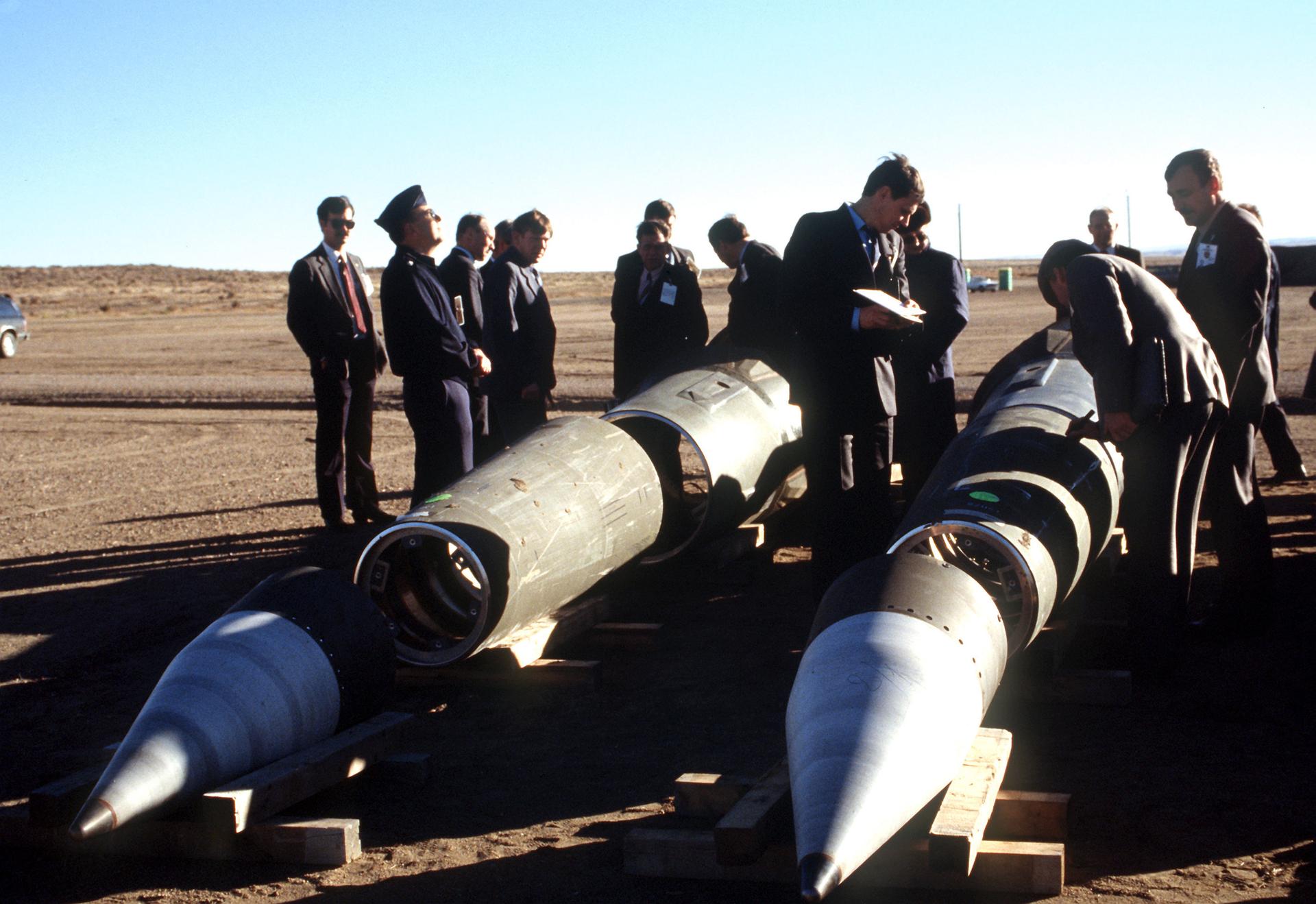
The INF Treaty marked the first time the Soviet Union and the US agreed to eliminate an entire class of weapons from their nuclear arsenals: ground-launched cruise missiles with short or intermediate ranges of 500 to 5,500 kilometers. Since 2014, US officials have accused Russia of violating the treaty by developing new ground-launched cruise missiles. Russia has responded by accusing the US of violating the treaty with its drone program.
START I and START II — 1991, 1993
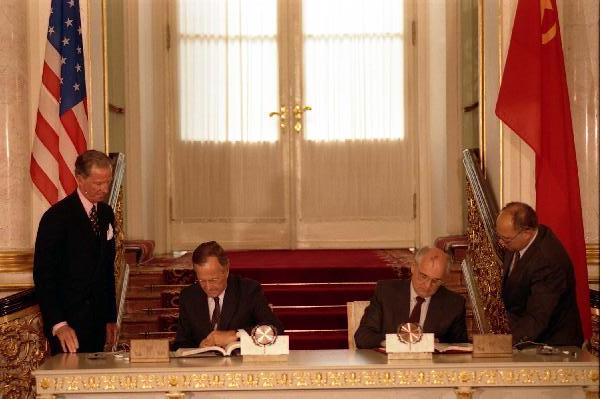
The US and Soviet Union signed two Strategic Arms Reduction Treaties in the early 1990s. START I, signed in 1991, limited both parties to 6,000 nuclear warheads and 1,600 delivery vehicles each and put in place mechanisms for inspection and transparency. It remained in force until December 2009, and US and Russia began negotiations for the New START Treaty later that year. START II established further limits on warheads and a phased plan for achieving disarmament goals. It never came into effect.
Southeast Asia Nuclear-Weapon-Free Zone Treaty — Dec. 15, 1995
The Treaty of Bangkok prohibited parties to the treaty from testing, using, manufacturing, acquiring or storing nuclear weapons. Member states include: Brunei, Cambodia, Indonesia, Laos, Malaysia, Myanmar, Philippines, Singapore, Thailand and Vietnam.
African Nuclear-Weapon-Free Zone Treaty — April 11, 1996
The Treaty of Pelindaba prohibited its parties from testing, using, manufacturing, acquiring or storing nuclear weapons. Member states include: Algeria, Angola, Benin, Botswana, Burkina Faso, Burundi, Cameroon, Chad, Comoros, Congo, Cote d’Ivoire, Equatorial Guinea, Ethiopia, Gabon, Gambia, Ghana, Guinea-Bissau, Guinea, Kenya, Lesotho, Libya, Madagascar, Malawi, Mali, Mauritania, Mauritius, Mozambique, Namibia, Nigeria, Rwanda, Senegal, South Africa, Swaziland, Togo, Tunisia, Tanzania, Zambia and Zimbabwe.
Comprehensive Nuclear-Test-Ban-Treaty (CTBT) — Sept. 10, 1996
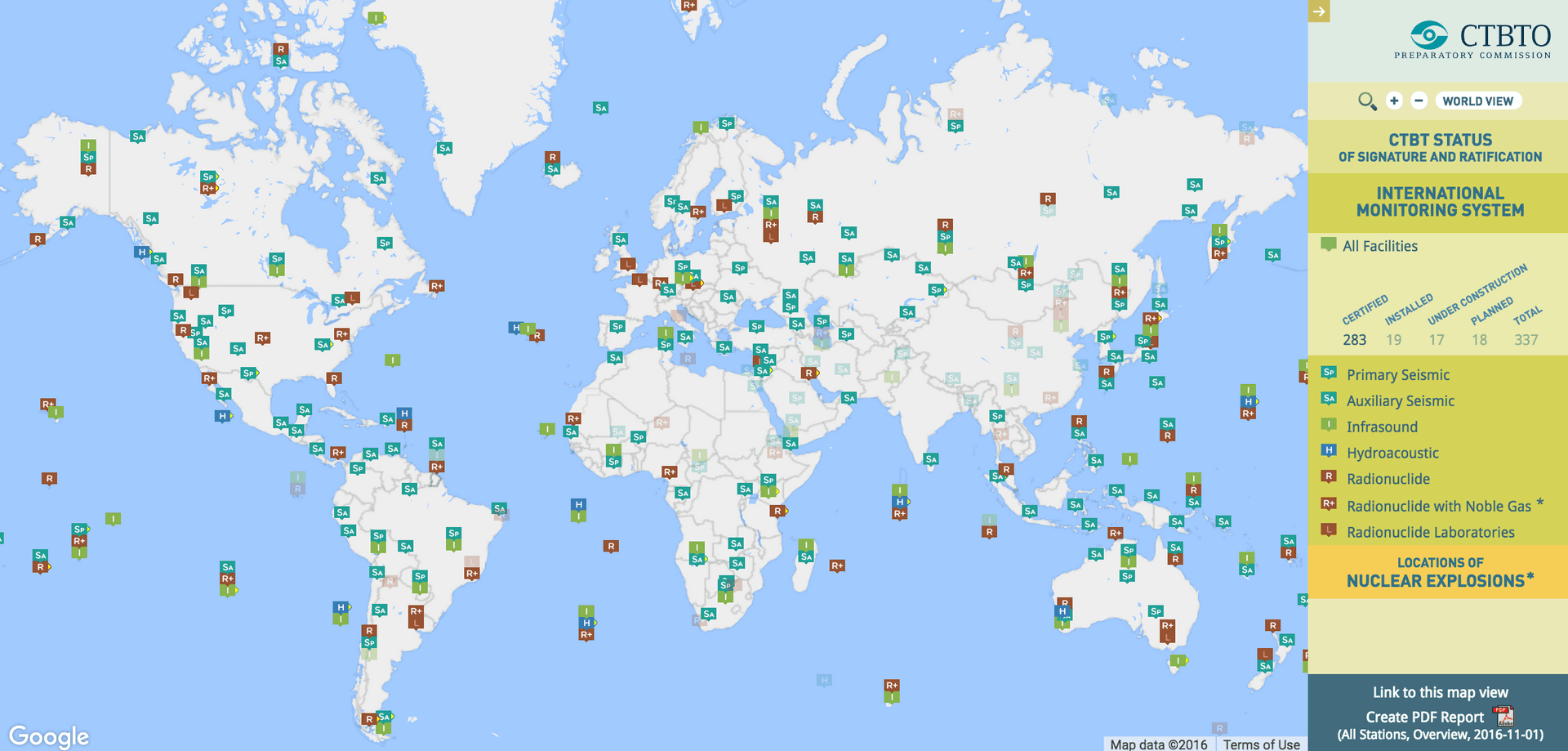
The Comprehensive Test Ban Treaty (CTBT), if it comes into effect, will prohibit all nuclear explosive tests globally. The UN General Assembly adopted the treaty on Sept. 10, 1996. There are 183 member states, 166 of which have ratified the treaty. The agreement won't go into effect unless all countries possessing nuclear technology sign and ratify it. China, Egypt, Iran, Israel and the US have signed but not ratified. India, Pakistan and North Korea have not signed. (This interactive map shows you signatory, ratifying and non-signatory states over time.) Once in force, the Comprehensive Test Ban Treaty Organization's International Monitoring System (IMS) will use hundreds of seismic, hydroacoustic, infrasound and radionuclide monitoring stations to listen for nuclear explosions.
Pakistan goes nuclear — May 1998
Two weeks after India tested a nuclear device for the first time in more than 20 years, Pakistan responded by detonating five nuclear weapons underground in Baluchistan.
SORT — May 24, 2002
Russia and the US signed the Strategic Offensive Reductions Treaty (SORT) on May 24, 2002, agreeing to reduce their nuclear arsenals to 1,200-2,200 deployed warheads by Dec. 31, 2012. The treaty had no provisions for verification or inspection. It was superseded by New START.
Central Asian Nuclear-Weapon-Free Zone Treaty — Sept. 8, 2006

This treaty prohibited parties from testing, using, manufacturing, acquiring or storing nuclear weapons. Member states include: Kazakhstan, Kyrgyzstan, Tajikistan, Turkmenistan and Uzbekistan.
North Korea goes nuclear — Oct. 9, 2006
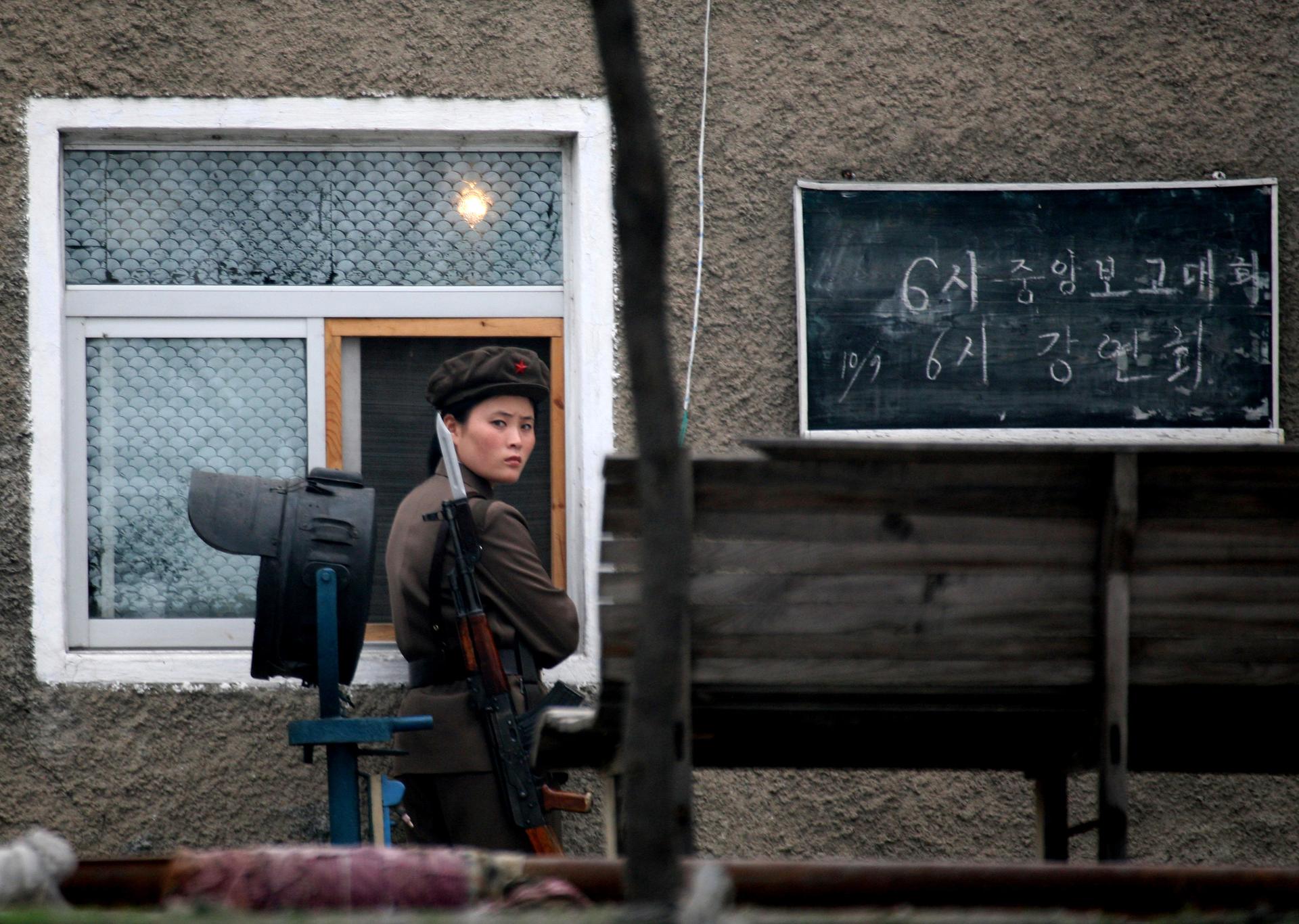
North Korea announced on Oct. 9, 2006, that it had successfully tested a nuclear weapon. The country was no longer merely an unstable and unpredictable autocracy — it was a nuclear one.
New START — April 8, 2010
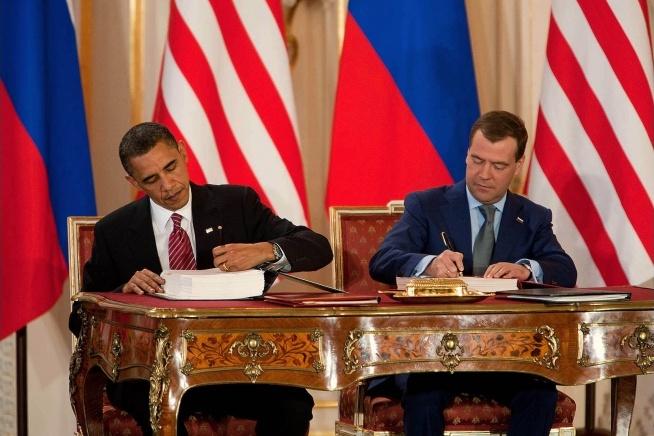
US President Barack Obama and Russian President Dmitry Medvedev signed the New START Treaty on April 8, 2010, in anticipation of SORT's expiration. It set new limits for operationally deployed nuclear warheads and delivery vehicles by February 2018, but did not limit inactive warheads. It also established inspection and verification procedures.
Iran nuclear deal — July 14, 2015
On July 14, 2015, Iran reached an agreement with China, France, Russia, the UK, the US and Germany to curb its nuclear program in exchange for lifting of economic sanctions.
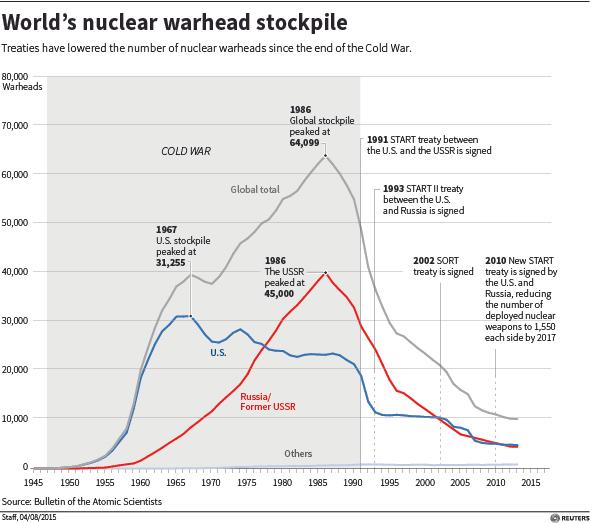
Key sources: US State Department, Nuclear Threat Initiative, UN Office of Disarmament Affairs, Comprehensive Nuclear-Test-Ban Treaty Organization Preparatory Committee.
We want to hear your feedback so we can keep improving our website, theworld.org. Please fill out this quick survey and let us know your thoughts (your answers will be anonymous). Thanks for your time!